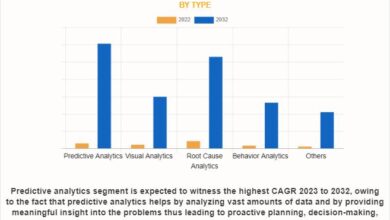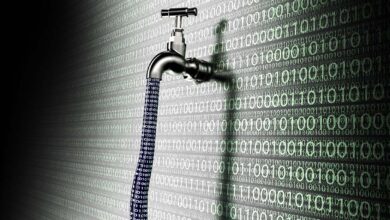What Does a Data Analyst Do?

In today’s technology-driven world, data is collected, analyzed and interpreted to solve a wide range of business problems. With a career as a data analyst, you could play a decisive role in the growth and success of an organization.
A data analyst is a lot more than a number cruncher. Analysts review data and determine how to solve problems using that data, and learn critical insights about a business’s customers and boost profits. Analysts also communicate this information with key stakeholders, including company leadership.
“Ultimately, the work of a data analyst provides insights to the organization that can transform how the business moves forward and grows successfully,” said Dr. Susan McKenzie, senior associate dean of STEM programs and faculty at Southern New Hampshire University (SNHU).
McKenzie earned a Doctor of Education (EdD) in Educational Leadership from SNHU, where she also serves as a member of the Sustainability Community of Practice. Throughout her career, she’s focused on reducing the barriers that inhibit the learning and application of math and science.
Suppose you’re interested in becoming a data analyst. In that case, it’s essential to understand the day-to-day work of an analytics professional and how to prepare for a successful career in this growing field.*
What Exactly Do Data Analysts Do?
Data analysts play a vital role in a modern company, helping to reflect on its work and customer base, determining how these factors have affected profits and advising leadership on ways to move forward to grow the business.
According to McKenzie, successful data analysts have strong mathematical and statistical skills, as well as:
- Analytical skills to gather, view and analyze information
- Numerical skills to measure and statistically analyze data
- Technical skills, including software and scripting languages, to organize and present data
McKenzie said that data analysts also require a strong foundation of business knowledge and professional skills, from decision-making and problem-solving to communication and time management. In addition, attention to detail is one of the essential data analyst skills as it ensures that data is analyzed efficiently and effectively while minimizing errors.
As a data analyst, you can collect data using software, surveys and other data collection tools, perform statistic analyses on data and interpret information gathered to inform critical business decisions, McKenzie said. For example, a data analyst might review the demographics of visitors who clicked on a specific advertising campaign on a company’s website. This data could then be used to check whether the campaign is reaching its target audience, how well the campaign is working and whether money should be spent on this type of advertising again.
Where can a data analyst work? Large amounts of data are becoming increasingly accessible to even small businesses, putting analysts in high demand across a wide variety of industries. For example, according to the U.S. Bureau of Labor Statistics (BLS), operations research analysts, which includes data analysts, held 109,900 jobs as of 2022, with an additional 24,700 by 2032.* That’s a projected growth of 23% for this role.*
Many organizations have even created information analyst teams, with data-focused roles including database administrators, data scientists, data architects, database managers, data engineers, and, of course, data analysts, McKenzie said.
What Qualifications Do I Need to Become a Data Analyst?
No matter what your specific interests are in the data analytics world, you’re going to need a bachelor’s degree to get started in the field. While many people begin a data analytics career with a degree in mathematics, statistics or economics, data analytics degrees are becoming more common and can help set you apart in this growing field, according to McKenzie.*
“With the increase in the amount of data available and advanced technical skills, obtaining a university degree specifically in data analytics provides the ability to master the necessary skills for the current marketplace,” McKenzie said.
An associate degree in data analytics is a great way to get your foot in the door. You’ll learn what data analytics is and basic fundamentals such as identifying organizational problems, and using data analytics to respond to them. Associate degrees are typically 60 credits long, and all 60 of those credits can be applied toward a bachelor’s in data analytics.
You may be able to transfer earned credits into a degree program, too. Jason Greenwood ’21 transferred 36 credits from schooling that he did over 30 years ago into a bachelor’s in data analytics program.
“I was really happy that as many credits transferred as they did, as it helped decrease what I needed to take from a course perspective,” he said.
Greenwood earned his data analytics degree from SNHU to pair with his experience working in the Information Technology (IT) field.
“Even though I had a successful IT career, I had managed it without a degree, and that ‘gap’ in my foundations always bothered me,” Greenwood said.
According to Greenwood, he was always interested in data, and his career focused increasingly on data movement and storage over the last decade. “The chance to learn about the analysis of that data felt like ‘completing the journey’ for me,” he said.
In a data analytics bachelor’s degree program, you may explore business, information technology and mathematics while also focusing on data mining, simulation and optimization. You can also learn to identify and define data challenges across industries, gain hands-on practice collecting and organizing information from many sources and explore how to examine data to determine relevant information.
Pursuing a degree in data analytics can prepare you to use statistical analysis, simulation and optimization to analyze and apply data to real-world situations and use the data to inform decision-makers in an organization.
Some universities also offer concentrations to help make your degree more specialized. At SNHU, for example, you can earn a concentration in project management for STEM to help you develop skills that may be useful for managing analytical projects and teams effectively.
A master’s in data analytics can further develop your skills, exploring how to use data to make predictions and how data relates to risk management. In addition, you’ll dive deeper into data-driven decision-making, explore project management and develop communication and leadership skills.
Finding an internship during your studies can give you essential hands-on experience that stands out when applying for data analyst jobs, McKenzie said, while joining industry associations for data analytics, statistics and operations research can provide key networking opportunities that may help grow your career.
Data Analyst vs. Data Scientist
Data analysts play a unique role among the many data-focused jobs often found in today’s businesses. Although the terms data analyst and data scientist are often used interchangeably, the roles differ significantly.
So, what’s the difference between data science and data analytics?
While a data analyst gathers and analyzes data, a data scientist develops statistical models and uses the scientific method to explain the data and make predictions, according to McKenzie. She used an example of weather indicators. While a data analyst might gather temperature, barometric pressure and humidity, a data scientist could use that data to predict whether a hurricane might be forming.
“They’re looking at the data to identify patterns and to decide scientifically what the result is,” she said. “The data analyst works on a subset of what the data scientist does.”
McKenzie said that data scientists generally have to earn a master’s degree, while data analysts typically need a bachelor’s degree for that role.
Is Data Analytics a Good Career?
A degree in data analytics could position you to enter a growing field and get started on a fulfilling career path.*
As technology advances and more of our lives are spent online, higher-quality data is getting easier to collect, encouraging more organizations to get on board with data analytics.
According to BLS, demand for mathematicians and statisticians is projected to grow by 30%, and job opportunities for database administrators are expected to grow by 7% through 2032.*
With career opportunities across nearly every industry, you can take your data analytics degree wherever your interests lie.
“Data analysts are in high demand across many industries and fields as data has become a very large component of every business,” said McKenzie. “The undergraduate degree in data analytics provides an entry place into many of these careers depending on the skills of the individual.”
*Cited job growth projections may not reflect local and/or short-term economic or job conditions and do not guarantee actual job growth. Actual salaries and/or earning potential may be the result of a combination of factors including, but not limited to: years of experience, industry of employment, geographic location, and worker skill.
Danielle Gagnon is a freelance writer focused on higher education. She started her career working as an education reporter for a daily newspaper in New Hampshire, where she reported on local schools and education policy. Gagnon served as the communications manager for a private school in Boston, MA before later starting her freelance writing career. Today, she continues to share her passion for education as a writer for Southern New Hampshire University. Connect with her on LinkedIn.



